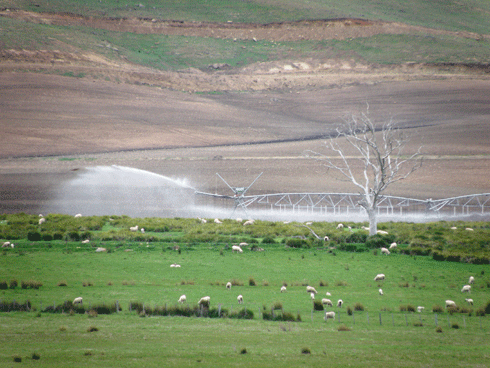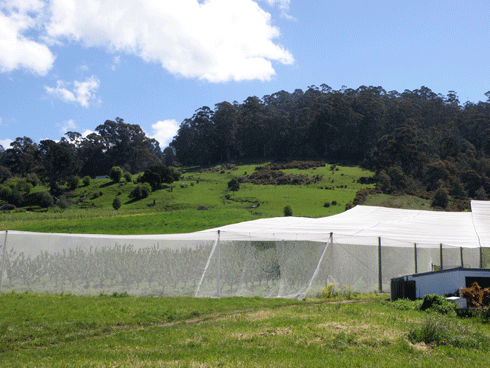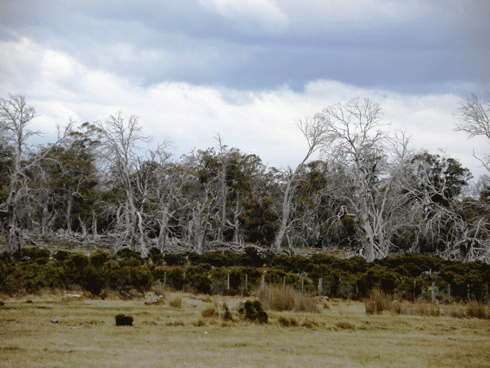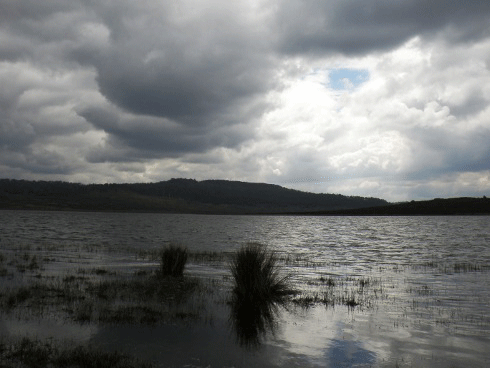
|
Published: 20 December 2010
The Apple Isle’s bid to feed Australia
As proposals to cut irrigation from the Murray–Darling Basin are announced, the search for Australia’s new food bowl has shifted to Tasmania. But, what impact will increased irrigation and land-use change have on Tasmania’s ecosystems?
The search for Australia’s new food bowl has taken a new twist of late, following the release of the Guide to the Proposed Murray–Darling Basin (MDB) Plan. The plan includes recommendations to slash irrigation by up to 45 per cent in some river systems, with total cuts up to 400 gigalitres (GL). While these measures will help restore a healthy river system to the Basin, they will inevitably affect agriculture in this region, which produces more than a third of Australia’s food supply.
Northern Australia has also been earmarked as a potential key to securing our food future, with calls to increase agriculture in regions that receive a deluge of rain during the wet season. A report released earlier this year that highlighted environmental concerns and suggested that further dam projects in the north would be inappropriate.1 Despite this, the northern food bowl vision is still being promoted by some politicians, including Western Australian Premier Colin Barnett.
More recently, Tasmania has thrown its hat into the arena, with Premier David Bartlett stating that ‘Tasmania has all the assets and qualities to become the next food bowl of the nation, when called upon.’ The Apple Isle already produces a significant amount of food, contributing more than 20 per cent to Australia’s aquaculture industry, and nearly nine per cent to dairy production.
While Tasmania accounts for only one per cent of Australia’s land mass, it has the highest ratio of water to land of any state, and receives up to 14 per cent of the country’s rainfall. This abundant water supply underpins the food bowl vision, with the state government allocating $400 million towards 13 key irrigation schemes. Half of these are expected to be complete in the next year, while the others, if approved, will be finished by 2014. In total, the schemes would provide an additional 250 GL of water a year by 2014 to support the projected growth in agriculture. Premier Bartlett has stated this water ‘will irrigate over 250 000 extra hectares of land, delivering an extra $200 million in produce, annually, at the farm gate.’ The additional water will represent a 40–50 per cent increase above existing irrigation supplies.

|
|
Centre-pivot irrigation in the southern Midlands. The Tasmanian government plans to increase irrigation in many regions across the state to substantially increase food production. Credit: Jo Isaac
|
Additionally, the Tasmanian Government’s Wealth from Water initiative, to begin in 2011, will drive rapid land-use change to fuel the production of higher-value crops, particularly in newly irrigated areas.
While schemes are earmarked for all regions of the state, the largest volumes of water will be sourced from the Central Highlands and the north-east. If irrigation schemes are successful, water will be pumped to currently dry regions of the northern Midlands, which have been highlighted for land-use change from grazing to high-value produce. Water will also be directed to land in the south-central area, the Coal River Valley, and the north-east coastal region.
Chief Executive of the Tasmanian Farmers and Graziers Association (TFGA), Ms Jan Davis, estimates that in perhaps two decades or so ‘we could double our current food production output.’ However, Professor Jonathan West, head of the Australian Innovation Research Centre in Hobart, and often described as the brainchild behind the ‘Tassie food bowl’ vision, is more cautious.

|
|
Vineyard and apple orchard in the Huon Valley. An increase in high-value products such as wine grapes will contribute to Tasmania’s food bowl vision. Credit: Jo Isaac
|
‘While Tasmania can increase key high-value areas including dairy, wine, aquaculture, horticulture and red meat,’ says Prof. West, ‘it will not make up for the volumes or food types that would be withdrawn from the Murray–Darling.’
Projections in the recently released ‘Climate Futures for Tasmania report’, prepared by the Antarctic Climate and Ecosystems Cooperative Research Centre, cast doubt on the feasibility of the food bowl dream.
According to the report, annual rainfall has already declined in the state, at levels similar to the southern mainland. While total annual rainfall is not projected to change, it is predicted to decline in central regions and the north-west, but increase in coastal areas. Declining rainfall affected farmers in the Midlands region during the prolonged drought of 2008, and previous estimates indicate that climate change could result in a 12 per cent decline in existing dairy output by 2050. Increases in evaporation (of up to 19 per cent), which will be greatest in the north and west of the state will also impact on water availability. The report also predicts temperature increases of 1.6–2.9°C, depending on the emissions scenario used.
The TFGA’s Ms Davis remains optimistic. ‘Climate change will affect agriculture in Tasmania, in a positive way, with increased temperatures meaning plants will grow quicker,’ she says. ‘Projected rainfall declines are minimal and the irrigation projects will help to drought-proof Tasmania.’

|
|
The impacts of declining rainfall and drought are already evident in Tasmania’s highlands region, with large stands of dead Miena cider gums a common sight. Credit: Jo Isaac
|
However, Professor Wayne Meyer, a leader in irrigation science and Professor of Natural Resource Sciences at The University of Adelaide, warns that Tasmania should proceed with caution. ‘With warmer temperatures and more carbon dioxide, plants will grow a little better. However, there is a probability of decreasing rainfall, and small changes in rain amount can lead to much larger changes in runoff,’ he says.
‘On first glance, the intention to use an additional 250 GL of water in total does not look excessive, but there is no doubt that irrigation is an intensive form of land use. All water is used by some part of the ecosystem, and some areas and systems will be more sensitive than others.’
Considerable land-use change and irrigation projects are planned for regions that will, according to the Climate Futures report, experience the most change in terms of rainfall decline and increased evaporation. The Midlands Water Scheme (MWS), one of the largest of the proposed irrigation schemes, would pump 45 000 megalitres (ML) of water from Arthur’s Lake and the Lower South Esk River to farms in the Midlands.
A report by CSIRO identifies potentially detrimental effects on ecological sites on the South Esk River as a result of irrigation plans. Similarly, a recent report from the Department of Primary Industries, Parks, Water and Environment warns that reduction in runoff in the Central Highlands could damage unique freshwater values, including threatened Galaxias and Paragalaxias species and Great Lake aquatic fauna. The rapid decline of the endangered Miena cider gum (Eucalyptus gunnii divaricata) in the region is thought to be directly related to declining rainfall over the past two decades, as the species is extremely drought intolerant.
Mr Daniel Hackett, local fly-fishing author and guide, believes that Tasmania’s $60 million recreational fishing industry is at risk. In relation to proposals to increase irrigation from the South Esk, he points out that ‘currently, the draft recommends minimum flows of 40 ML per day, despite scientific advice advocating 110 ML per day. At 40 ML per day, fish stocks will suffer and the ecology of the river will be under stress. The draft also fails to account for additional water use by some 15?000+ hectares of timber plantations.’
As Australians face the reality that climate change is undermining our food security, and the food production capacity of the Murray–Darling Basin remains uncertain, there is no doubt that the search for a new food bowl will continue. However, as impact assessments get underway for the proposed Tasmanian irrigation projects, it remains to be seen whether Premier Bartlett’s dream for the Apple Isle will meet a similar fate as the vision for the north.
More information:
Tasmania’s Water: www.tinyurl.com/tasmania-water
Summary: Climate Futures Report: www.tinyurl.com/climate-report1
Report on South Esk River: www.tinyurl.com/eskriver
Vulnerability of Tasmania’s Ecosystems to Climate Change: www.tinyurl.com/tasmania-climate
1 Northern Australia Land and Water Taskforce, Sustainable Development of Northern Australia, www.tinyurl.com/3y4kyxw




